japanese new year traditions
Japanese New Year Traditions: A Guide for Beginners!

Thalia Harris
Posted on December 18, 2023
Share:

Japanese New Year traditions blend ancient customs and modern celebrations, creating a unique tapestry of rituals deeply rooted in Japanese culture. Let’s take a closer look at some traditions you should know about.
Hatsunohide
Hatsuhinode, or “the first sunrise of the new year,” symbolizes renewal and aspiration. In Shinto, the traditional Japanese religion, people believe that toshigami, or New Year gods, appear at the first sunrise to bless their followers with good health, good fortune, and prosperity. Japanese traditionally pray for good health and a bountiful harvest when welcoming hatsuhinode.
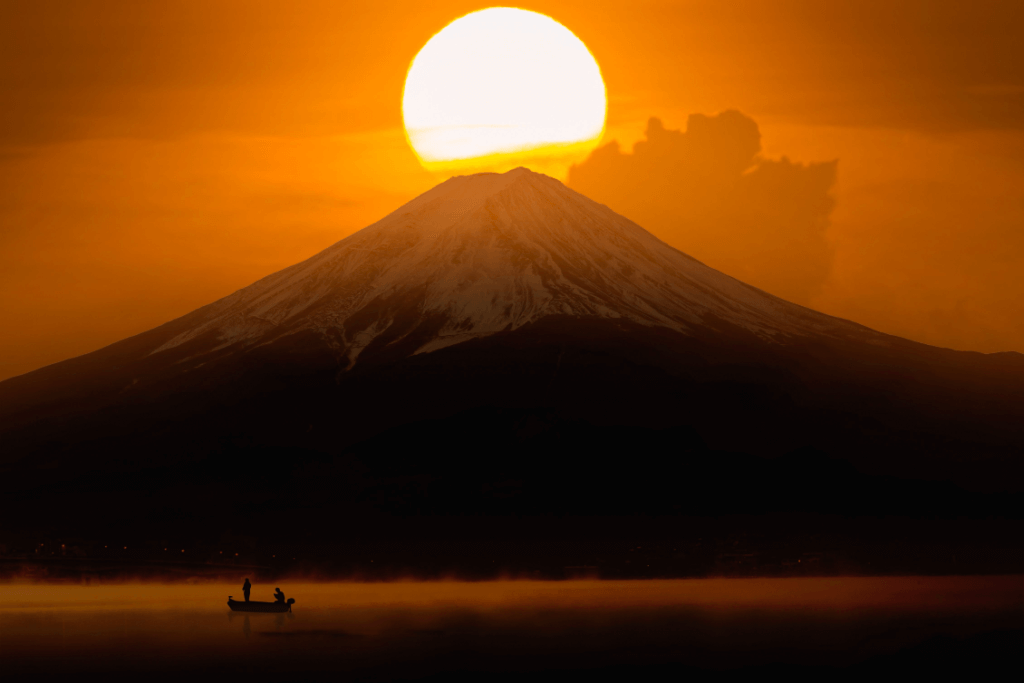
Many places in Japan organize special events to celebrate the New Year’s first sunrise. Hatsuhinode is just one of the many “hatsu” (first) activities that hold particular importance in Japanese culture, such as hatsumode (the first shrine visit) and hatsuyume (the first dream of the year).
Hatsumode
Hatsumode (初詣) is when people visit a Shinto shrine or a Buddhist temple at the beginning of the New Year. It’s a time to express gratitude for the past year and pray for good fortune in the coming year. During Hatsumode, people make wishes and buy charms for good luck. They visit shrines or temples in the first few days of the new year, often attracting long lines of visitors. The tradition is popular among people of different religions and beliefs.
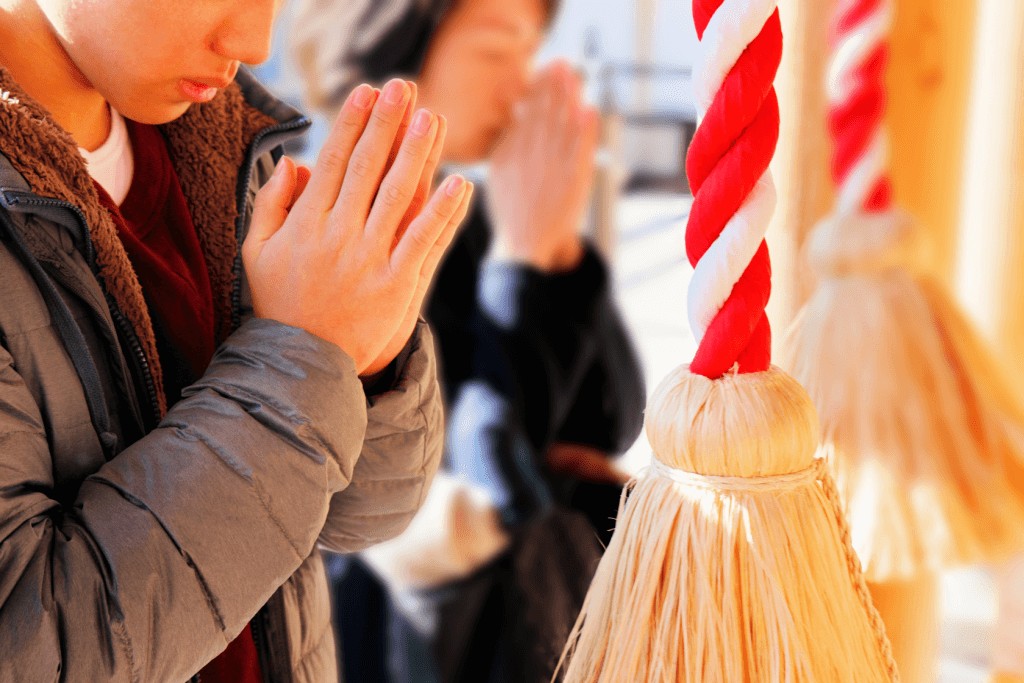
Besides visiting the shrine or temple, hatsumode also involves customs like cleaning the house, paying off debts, visiting friends and family, and exchanging gifts. The act of worship is generally quite brief and individual and may involve queuing at popular shrines. Some shrines and temples have fortunes and good luck charms that can be purchased. It’s important to show respect when visiting a shrine or temple by wearing formal attire and being quiet. Even if you’re not religious, you can participate in hatsumode to experience this essential Japanese tradition.
Osechi Ryori
Osechi ryori is a special meal people enjoy on New Year’s Day in Japan. It is the most important meal of the year. The food comes in jubako (red lacquered boxes), and each dish has a special meaning to welcome the New Year. The tradition of eating osechi ryori is a way to wish for happiness and prosperity in the coming year. The whole family shares and enjoys it together on New Year’s Day. Not to mention, the food is usually colorful and symbolic dishes!
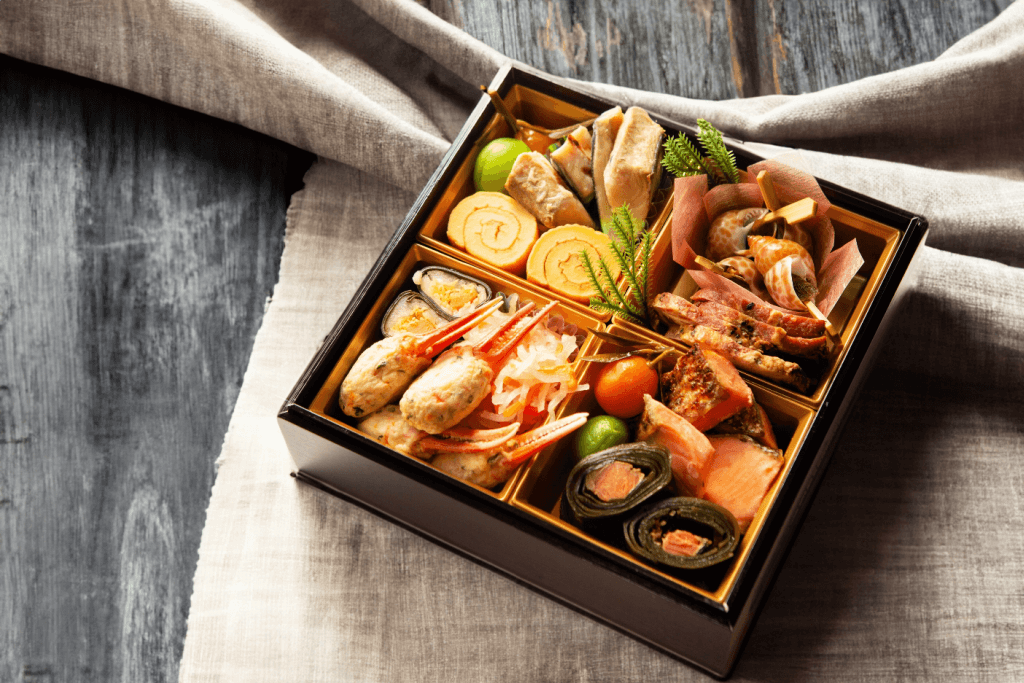
Typical dishes include sweet rolled omelet, candied chestnuts and sweet potatoes, candied anchovies, sweet black soybeans, and pickled vegetables. The meal is prepared with great care and tradition and is integral to the Japanese New Year celebration.
Are you interested in amazing snacks for the New Year? Check out Sakuraco! Sakuraco delivers traditional Japanese snacks, teas, and sweets from local Japanese makers directly to your door so you can enjoy the latest delicacies directly from Japan!
Ozoni
Ozoni, or お雑煮, is a hearty and nourishing soup made with a light miso or kombu dashi-based broth, vegetables, and mochi (rice cakes). The soup is prepared in various styles, with different regions and families having unique recipes.
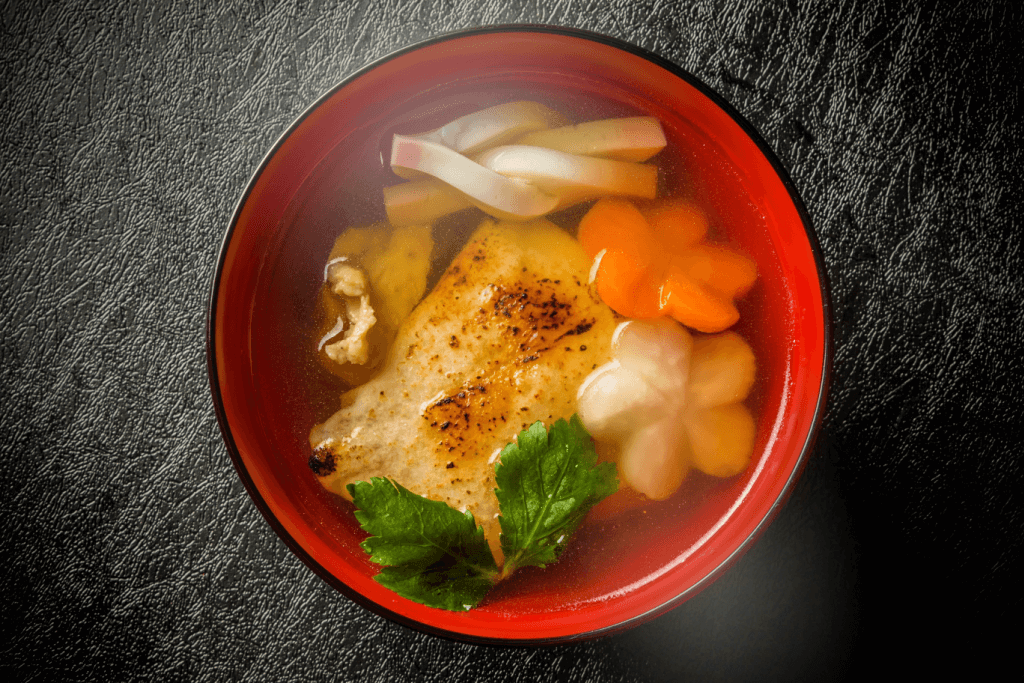
It is believed to bring good luck for the new year and is integral to the Japanese New Year celebration. The soup typically includes chicken, carrots, daikon, fishcake, mushrooms, and other colorful and symbolic ingredients. Each family’s version of ozoni may vary, and it is a cherished dish that holds cultural significance in Japan.
Otoshidama
Otoshidama is when adults give money to children to celebrate the turn of the year. The money is placed in special gift envelopes called pochibukuro before being handed over. This custom is a way of showing appreciation to children and giving them hope for the New Year.
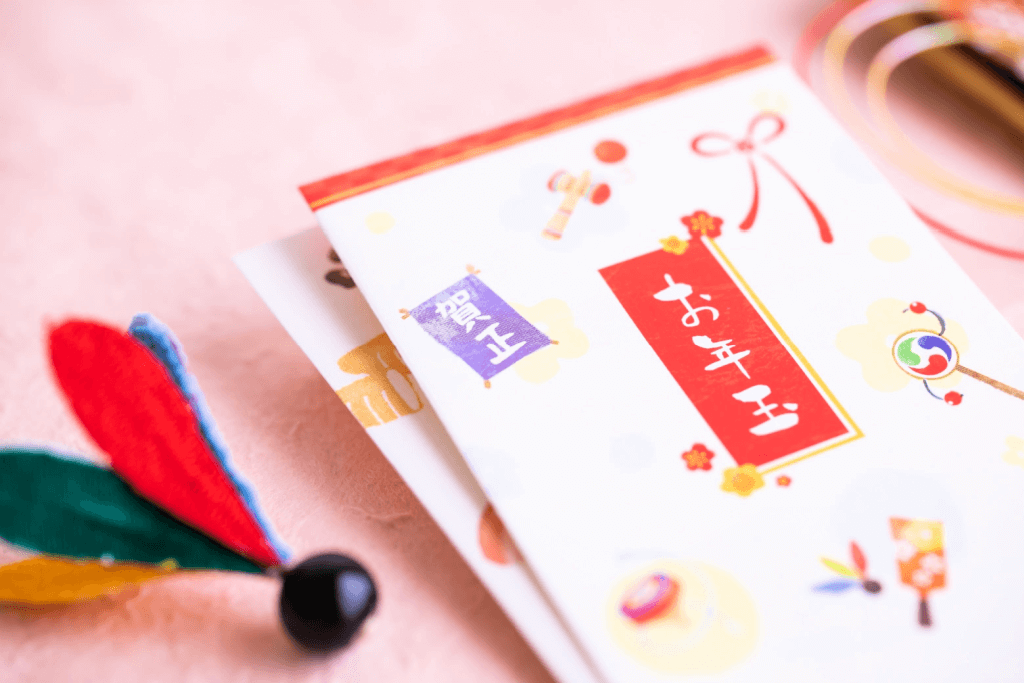
The amount of money given as otoshidama varies, with older children traditionally receiving a more considerable sum than younger children. This tradition stops when children turn 20, the legal adult age in Japan. Otoshidama is an exciting tradition for children and is an important part of the Japanese New Year celebration.
Why are these Japanese New Year traditions so unique?
Japanese New Year traditions are unique because they blend ancient customs with modern celebrations. For example, the tradition of Oosouji, the big clean-up, reflects the Japanese value of starting the New Year with a fresh and clean environment. Another tradition, Joya no Kane, involves ringing temple bells to drive away negative emotions from the past year.
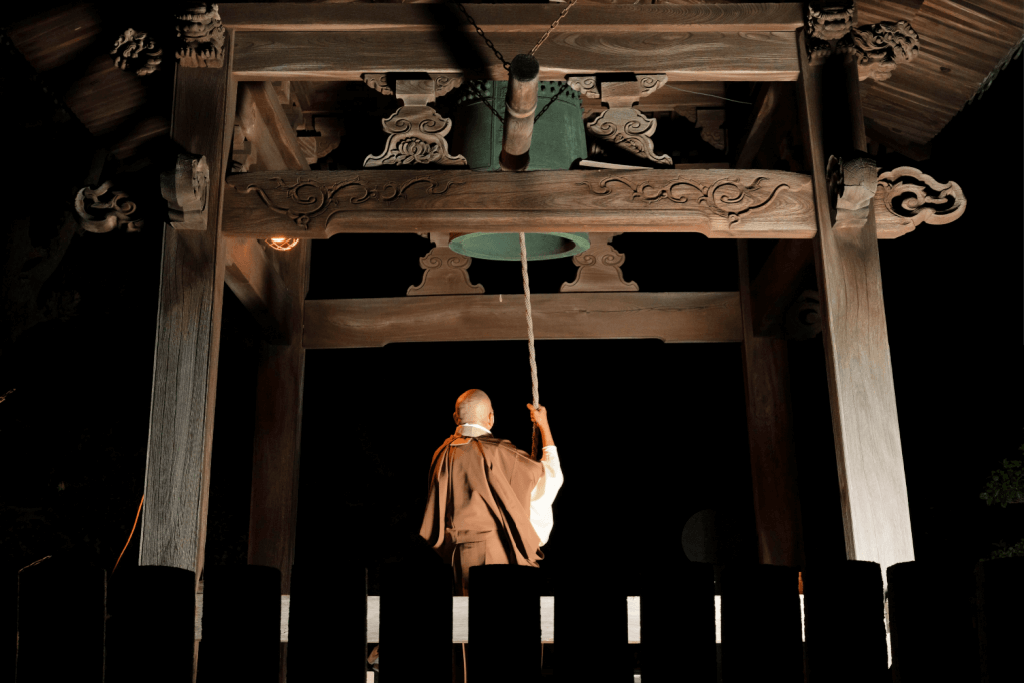
These traditions are deeply rooted in Japanese culture and create a rich tapestry of rituals that make these Japanese New Year traditions unique. Would you ever celebrate Japanese New Year’s? Let us know in the comments below!

Discover authentic flavors with Sakuraco
Get Sakuraco 

Discover authentic flavors with Sakuraco
Get Sakuraco 
Related Articles

Japanese Crane Origami: The Magic of Renzuru
In Japan, a simple paper crane carries deep meaning as a symbol of peace, healing, and hope. But take that one crane and connect hundreds into a flowing chain, and you create renzuru, linked origami cranes that transform a single fold into a breathtaking arrangement of color and hope.

Steam Train in Shizuoka: Riding the Oigawa Railway
For travelers who love history, beautiful views, and cozy retro vibes, this steam train is one of Shizuoka’s most charming treasures, with some of the best views. If you want to know more about this train, keep reading below!

Nara Japan: The Amazing Legend of the Sacred Dragon
In Japanese culture, dragons are spiritual beings that represent strength, prosperity, and a harmonious balance with the natural forces. Nara, Japan, has a unique story associated with sacred ponds and revered shrines throughout the region.

Nambu Tekki: Morioka’s Amazing Iron Craft
In the historic city of Morioka, Iwate Prefecture, a craft with over 400 years of history continues to captivate with its rustic beauty and practical charm. Nambu tekki, or Nambu cast iron, refers to traditional ironware, such as teapots, kettles, and decorative pieces, that embody the spirit of Tohoku craftsmanship.



